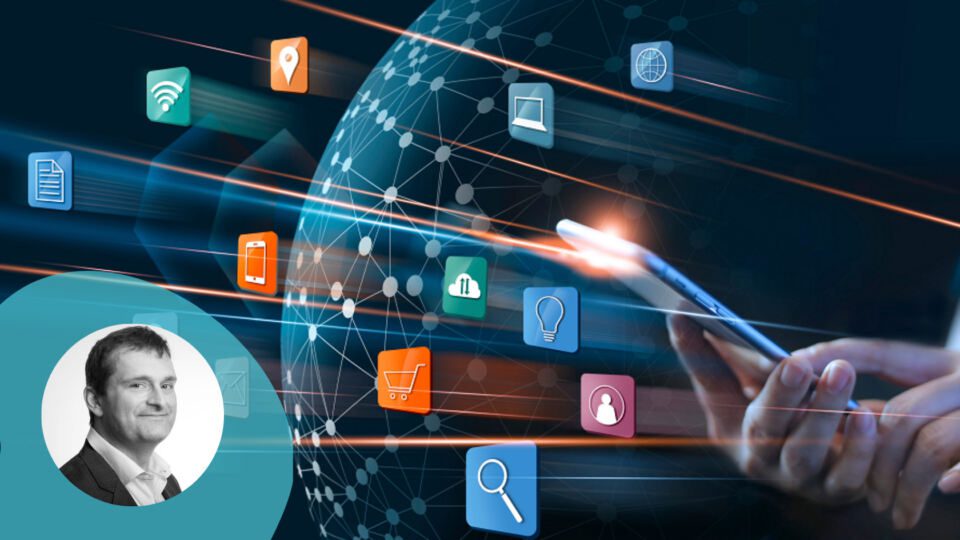Technology has been reshaping industries across the board, but the palpable impact on the retail industry clearly stands out amongst all the digital transformation stories. How, where and when we shop has changed dramatically in recent years, and the increasing reliance on technology shows no signs of stopping. A McKinsey report predicts that one third of all retail operations will be impacted by technology by 2030, from supply chain to brick-and-mortar stores.
The Evolution of the Customer Experience (CX)
This tech-forward tendency goes hand in hand with a growing demand for high-speed internet to ensure business continuity, prevent revenue loss and, ultimately, improve customer experience. Retailers are looking to provide a smooth in-store and online experience, guarantee immediate and secure transactions and manage stocks and logistics efficiently.
Every step of the customer journey is now largely reliant on and enhanced by smooth connectivity, from loyalty programs and reward apps to browsing and paying for goods. Companies like Tesco and Muji are streamlining the payment process, making paying for products faster in stores with cashierless technology. There’s an economic reason for that — McKinsey reported that automated checkout could save companies up to $380 billion a year by 2025.
The widescale digital transformation within the retail industry is likely to make cashierless stores the norm. The widescale implementation of this technology will require the use of multiple applications and a high degree of interoperability across systems. This new ecosystem will be underpinned by a secure network and sustained by reliable internet connectivity. This will also ensure continuous access to customer data, yielding deep insights that smart companies are leveraging to future-proof their businesses — harnessing predictive insights to anticipate behaviors, flag CX issues and identify opportunities.
The Convergence of In-Store and Online
While ecommerce booms, brick-and-mortar shops are focusing on creating in-store experiences that inspire customers to keep coming back. Some retailers entice their customer base to visit in person by offering a unique hybrid experience.
One of the companies at the forefront of this type of innovation is Farfetch, a well-known luxury ecommerce band. It recently unveiled the “store of the future,” merging the physical and digital in its approach. By using augmented reality, innovative payment solutions and emotion-scanning software, Farfetch is strengthening the emotional connection while also collecting key data on customer behavior.
Different retailers will choose different innovation paths, but ultimately they face similar industry-specific challenges. Keeping the cost of innovation down without sacrificing the quality of connectivity is critical. Studies have shown that 1 in 4 visitors will leave a website if it takes longer than 4 seconds to load. And while it’s less common for in-store customers to leave if they have to wait for service, it will likely have a palpable effect on retention rates and revenue down the line.
This calls for a flexible design option when it comes to designing the IT infrastructure. Tailoring the connectivity solution to the specific needs of the business not only allows for greater control overall, but it also ensures that whatever is being put in place aligns with the already existing digital presence and is fully interoperable.
Logistics and Operations
The increasing reliance on connectivity doesn’t stop with the customer-facing side of retail; backend operations also benefit hugely from technological innovation. Success in logistics and operations is defined by efficiency, heavily relying on accurate and timely data. Ensuring optimal connectivity means real-time access to this data, which, combined with integrated systems and apps, allows retailers to automate processes like restocking shops and warehouses and liaising with suppliers.
Recent years have shown the vulnerability of supply chains. One of the industry’s biggest challenges right now is accounting for those global fluctuations that can cause significant delays for retailers down the line. IoT-enabled devices are capable of increasing visibility within the supply chain and connecting the dots within the system so no store or warehouse is siloed.
This is a true game changer for retailers with multiple shop locations scattered across the country or even the globe. For example, lululemon’s customer-facing inventory managers are using RFID-based technology to check product availability in real time and advise the customer which store has stock, taking advantage of the immediate connection offered by IoT technology.
A Strong Foundation for Innovation
The many advantages that digital transformation carries will only be as effective as the IT infrastructure enabling it — from streamlining customer experience to utilizing IoT, speedy and reliable connectivity is at the heart of making it all work for your business. End-to-end operations need consistent service experience across all geographies, with proactive in-region support from a trusted managed service provider.
This is increasingly true for retailers with a global footprint, as internet connectivity will vary greatly across locations. Partnering with a global network provider can circumvent regional connectivity issues, guaranteeing vetted third-party suppliers and the security of a managed network solution that is designed with the technology in mind.
Digital transformation is not a finish line businesses reach but an ever-evolving endeavor for gold-standard internet connectivity. Those who stay ahead of the curve and successfully implement the newest innovations are poised to reap the most benefits.
Francois Champagne is Senior Solutions Engineer at Expereo. With over 20 years of work as an engineer, he joined Expereo as a Senior Solutions Engineer in 2020. As an expert in the WAN he has a wide breadth of knowledge around voice, video, data center and security products. At Expereo he is able to leverage his technical knowledge to develop design solutions while also ensuring compatibility with other services that might be needed by the customer.




